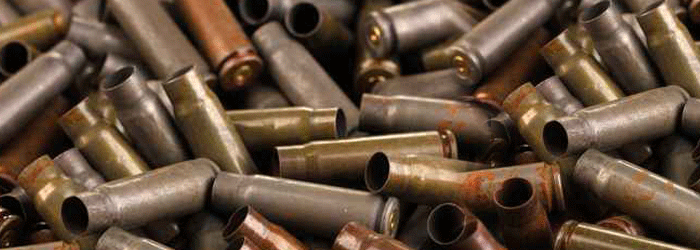The Importance Of Caution When Preparing Brass For Reloading
Although the reloading brass preparation process is likely to vary from person to person, Peregrine Bullets urges all reloaders to err on the side of caution and to take as many of the following steps as possible to ensure that brass is prepared to the utmost quality before reloading bullets.
Peregrine Bullets also advises that preparing brass for reloading should form the most time consuming, and intensive part of the reloading process. This will ensure the highest possible quality of reloaded cases available.
Steps to prepare reloading brass
- Check the brass for damage or defects throughout the brass preparation process. Checking brass should start immediately upon retrieving the spent cartridges after shooting, until the brass is ready for reloading. Although some hunters opt not to properly tumble, clean and polish their brass, those who require absolute precision and accuracy, often eagerly follow a rigorous cleansing process in order to ensure the highest quality brass possible. In order to increase the likelihood of spotting damage and defects to brass, Peregrine Bullets advises that all shooters follow a proper cleaning routine in preparing their brass for reloading.
- Cut and clean primer pockets. Once the brass has been cleaned properly, the primer pockets can be cut and cleaned. Whether this process is done once or numerous times is up to the reloader. The cutting and cleaning of the pockets can often give an indication of the pressure of the bullet load on the brass, and should therefor be given due attention.
- Anneal the brass (if desired) This step is not a necessary requirement after every time that brass has been fired. But it is important to soften the brass during this process in order to prevent damage to the brass from being hardened by repetitive shooting.
- Resize and stretch the brass to correct measurements: Shooting the brass often brings about changes to the size and shape of the cartridge, making the resizing of the brass essential to the reloading process.
- Final inspection: Once steps 1 – 4 have been undertaken, the brass can be given a final once-over in order to determine whether any damage to the brass has occurred. If the brass be in good condition, the reloader can start the reloading process.
Recent Articles
How To Correctly Seat Peregrine Bullets
Seating the depth of hunting bullets ca [...]
How To Inspect Reloading Brass
Reloading brass inspection for damages [...]
How To Choose A Reloading Press
Reloading Press Purpose The purposes of [...]
How To Prepare Brass For Reloading
The Importance Of Caution When Prepar [...]





